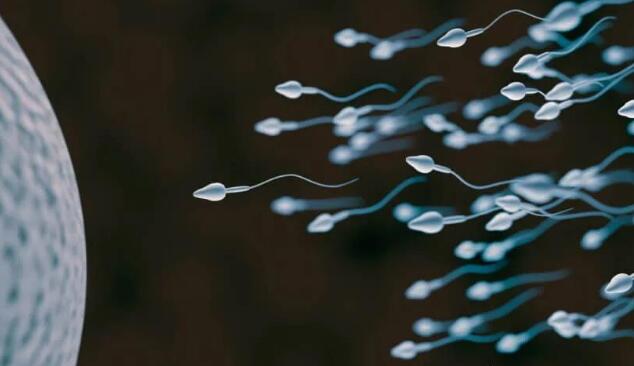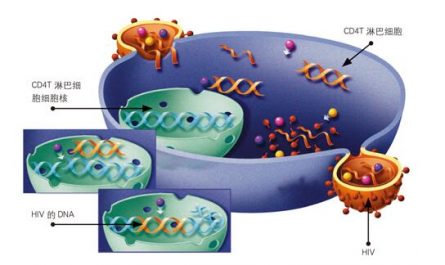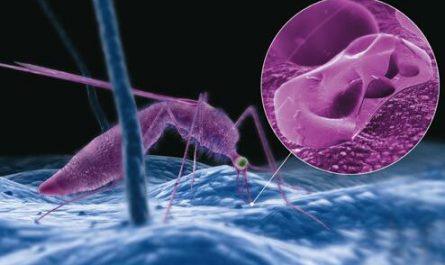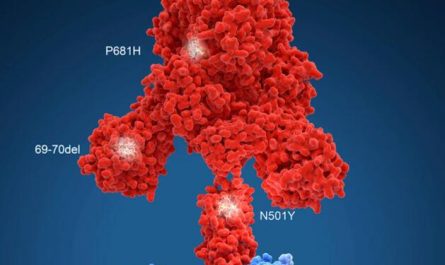In the process of fertilization of mammals, millions of sperm are like thousands of horses on the battlefield. In the process of rushing to the egg, they “pass five levels and cut six generals”, and finally try their best to win. Sperm is uniquely favored by egg. But does the ultimate winner sperm depend on luck? Many studies have shown that the competitiveness of individual sperm is different. Moreover, some sperm can “carry poison”…
In a new study published in “PLoS Genetics”, scientists from the Max Planck Institute for Molecular Genetics (MPG) in Germany published an article entitled “RAC1 controls progressive movement and competitiveness of mammalian spermatozoa”, describing How does the genetic factor called “t-haploid” promote the successful fertilization of the sperm carrying it. They showed for the first time through mouse experiments that sperm with t-haplotype is more capable of moving forward than “normal” sperm, thus establishing its advantage in fertilization.
Sperm movement in mammals is extremely complex. The forward movement of sperm requires driving force and steering. It is known that forward movement is mainly controlled by the outer dynein arm (ODA), while the inner dynein arm (IDA) controls the formation and transmission of flagella. However, how to coordinate the activities of ODA and IDA to make the sperm move to the egg orientated is still a mystery.
During fertilization, sperm compete with each other in order to reach the egg first. Although Mendelian genetics predicts that all sperm participating in the “fertilization race” have the same chance of success, there is a typical example in mammals that breaks the law, namely the t-haploid of mice.
The t-haploid is a genetic variation region of about 40Mb on chromosome 17, which encodes factors that cause deviations in allele heritability.
In this study, the researchers analyzed individual mouse sperm and found that most sperm that move slowly forward on their path are genetically “normal”; while sperm that have the ability to move forward in a straight line quickly Most of them are t-haplotype “players”, they are also called RAC1 protein to provide energy. Researchers have discovered that RAC1 is a molecular switch that pushes sperm forward, that is, it controls male fertility. It is known that RAC1 transmits signals from outside the cell to the inside of the cell by activating other proteins, and is involved in guiding the transfer of white blood cells or cancer cells to cells that release chemical signals.
The researchers studied the role of RAC1 in mouse sperm movement at a physiological level. The results show that both the increase and decrease of RAC1 activity can impair the forward movement of sperm. In the sperm population, sperm with RAC1 activity balance has an advantage in the competition to rush to the egg cell. Therefore, RAC1 plays a vital role in controlling sperm activity and competitiveness.
The researchers also discovered that t-haploid sperm contains certain genetic mutations that interfere with regulatory signals. These mutations were established in the early stages of spermatogenesis and distributed to the sperm of mice carrying t-haploids. These mutations are precisely the “poisons” that interfere with sperm movement.
The study’s corresponding author, Bernhard Herrmann of the Max Planck Institute for Molecular Genetics said: “Sperm with t-haploid type will try to make sperm without this genetic factor lose function. The trick is that t-haploid will do.” Poison’all sperm, but at the same time produce a kind of’antidote’ that only protects itself. Imagine that in a marathon, all participants drank poisonous water, but some people also took antidote .”
The “antidote” works after meiosis (at this time the spermatogonia only carries half of the chromosomes). Only half of the sperm with t-haploid form produced this “antidote”, which can reverse the negative effects of the “poison”. This protective factor is only retained in t-haploid sperm.
The researchers observed that in mouse sperm with t-haploid type on only one of the two chromosomes, some moved forward, while others remained almost motionless. They tested individual sperm and found that most genetically “normal” sperm cannot move in a straight line. When they treated mixed sperm with a RAC1 inhibitor, they found that genetically “normal” sperm could also gradually swim at this time; but the advantage of t-haploid sperm disappeared. This indicates that abnormal RAC1 activity can disrupt sperm activity.
This result explains why male mice with two copies of t-haploid (one on chromosome 17) are usually sterile. The researchers found that the RAC1 activity level of these sperm is much higher than that of genetically normal mice, and they have almost no exercise capacity. They also found that the sperm of normal mice treated with RAC1 inhibitors also lost the ability to move forward. Therefore, too low RAC1 activity is also disadvantageous. Researchers speculate that abnormal RAC1 activity may also be a potential cause of male infertility.
The results of the study emphasize the fact that sperm are ruthless competitors to each other. In addition, the example of t-haploid type illustrates that genetic factors can help a single sperm have an advantage in the race of life, thereby promoting the transmission of specific genetic mutations to the next generation.






